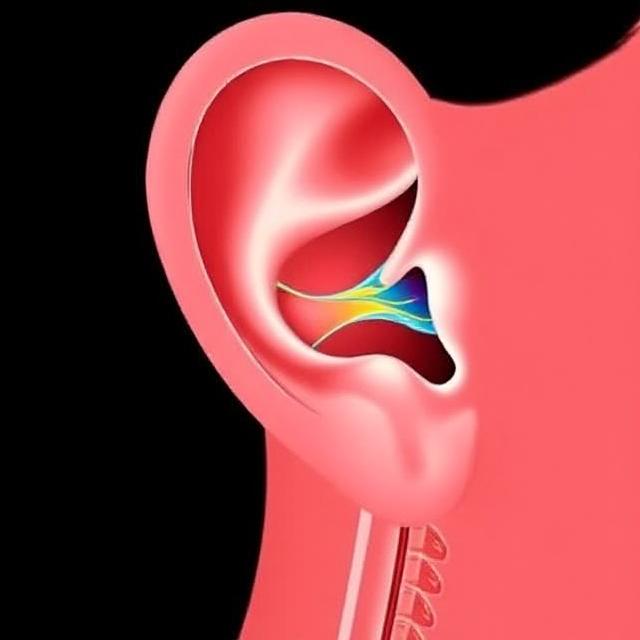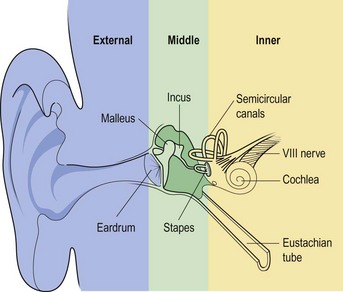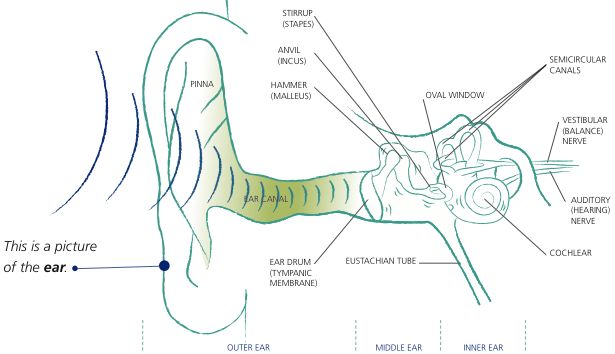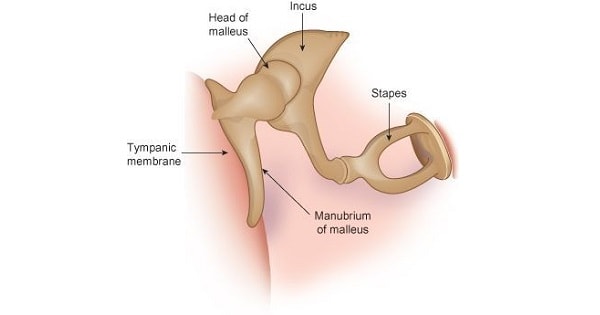Ear anatomy is a special section of anatomy that studies the structure of the hearing system. The individual structures of the organ are where sound is decoded. They help you maintain your upright position and balance. Each part, from the visible curves of the outer ear to the hidden structures deep in the skull, affects how you perceive your surroundings. This includes recognizing a familiar voice and maintaining balance when walking in the dark. How does each part of the ear function? How does sound travel through it, and why is this complex system so important to everyday life?
Overview of the Three Main Parts of the Ear
The human ear has three distinct zones: the outer ear, middle ear, and inner ear. Each plays a unique role in the hearing system. Together, they turn vibrations in the air into signals your brain can understand. Let’s break them down one by one.
The Outer Ear: Your Sound Collector
The outer ear is what you see when you look in the mirror. It includes the pinna, that fleshy, curvy part, and the ear canal. The pinna’s shape isn’t random—it funnels sound waves into the canal like a satellite dish catching signals. The canal, about an inch long, guides those waves inward. It’s lined with skin, hair, and even wax to trap dust and keep things clean. This part of the ear anatomy sets the stage for everything else.
The Middle Ear: The Sound Amplifier
Next up is the middle ear, a small air-filled chamber behind the eardrum. It houses the auditory ossicles—three tiny bones called the malleus, incus, and stapes. These bones are the smallest in your body, but they’re mighty. They amplify sound vibrations, making them stronger before passing them along. The middle ear also connects to your throat via the Eustachian tube, which helps balance air pressure. Without this setup, sounds would be too weak for your brain to process clearly.
The Inner Ear: The Sound Translator
The inner ear is where the magic happens. Deep inside your skull, it’s home to the cochlea, a snail-shaped structure filled with fluid and tiny hair cells. These cells turn vibrations into electrical signals your brain can read. The inner ear also contains the vestibular system, which helps with balance. This part of the ear anatomy is like a translator, converting raw sound waves into something meaningful. It’s a complex, delicate system that makes hearing possible.
How the Ear Captures and Transmits Sound
Sound starts as vibrations in the air, like ripples on a pond. Your ears catch these ripples and turn them into signals your brain understands. The hearing system is a chain reaction, with each part of the ear anatomy playing a specific role. Here’s how it works, step by step.
- Sound waves hit the pinna. The outer ear’s shape directs waves into the ear canal.
- Vibrations reach the eardrum. The canal funnels sound to the eardrum, which starts to vibrate.
- The ossicles amplify the signal. The malleus, incus, and stapes pass vibrations from the eardrum to the inner ear, boosting their strength.
- The cochlea processes the vibrations. Fluid in the cochlea moves, triggering hair cells to send electrical signals.
- The brain interprets the signals. The auditory nerve carries these signals to your brain, which decodes them as sound.
Each step is critical. If one part fails, the whole hearing system suffers. The outer ear, middle ear, and inner ear work like a relay team, passing the baton of sound until it reaches your brain.
The Science of Sound Waves
Sound travels as waves of pressure through the air. High-pitched sounds, like a whistle, have fast vibrations. Low-pitched sounds, like a bass drum, vibrate more slowly. The ear anatomy is built to handle a wide range of these frequencies. The outer ear catches them, the middle ear amplifies them, and the inner ear sorts them out. Your brain then figures out if it’s a bird chirping or a car honking. This process happens in milliseconds, which is pretty impressive when you think about it.
The Auditory Nerve’s Role
Once the cochlea does its job, the auditory nerve takes over. It’s like a highway carrying signals from the inner ear to the brain. Each hair cell in the cochlea connects to nerve fibers, sending specific information about pitch and volume. The brain uses this data to create the sounds you hear. Damage to these nerves can lead to hearing loss, showing how vital this part of the hearing system is.
The Role of the Eardrum
The eardrum, or tympanic membrane, is a thin piece of tissue separating the outer ear from the middle ear. It’s like a drumhead, tight and sensitive to vibrations. When sound waves hit it, it moves, kicking off the process that lets you hear. Its role in the ear anatomy is simple but essential.
| Aspect | Description |
| Location | Between the outer ear and middle ear, at the end of the ear canal. |
| Structure | Thin, cone-shaped membrane, about 8-10 mm in diameter, made of skin and tissue. |
| Function | Vibrates when sound waves strike, passing energy to the auditory ossicles. |
| Sensitivity | Responds to even the tiniest vibrations, like a whisper or a loud shout. |
| Protection | Acts as a barrier, shielding the middle ear from debris and bacteria. |
The eardrum’s vibrations are tiny but precise. If it’s too stiff or damaged, it can’t move properly, which messes with the hearing system. A healthy eardrum is flexible, letting it respond to a wide range of sounds. It also protects the middle ear by keeping out dirt and germs.
Why the Eardrum Matters
Without the eardrum, sound waves would just bounce around the ear canal. It’s the first step in turning those waves into something your brain can use. The auditory ossicles rely on its movement to do their job. If the eardrum tears—say, from an infection or loud noise—it can heal, but severe damage might need surgery. Its role is small but mighty in the grand scheme of ear anatomy.
Common Eardrum Issues
Sometimes the eardrum faces problems. Infections, like otitis media, can cause fluid buildup, dampening its vibrations. Loud noises, like a concert or explosion, can rupture it. Even a cotton swab can do damage if you’re not careful. These issues can disrupt the hearing system, showing how delicate this part of the ear anatomy is. Keeping it safe is key to clear hearing.
How the Ear Helps with Balance
Your ears do more than just hear. They help you stay upright and move without falling. The inner ear’s vestibular system is the star here. It’s a network of fluid-filled canals and sacs that track your head’s position. This system works with your eyes and muscles to keep you balanced, making it a critical part of the ear anatomy.
- Semicircular canals detect rotation. Three loops in the inner ear sense when your head turns.
- Otolith organs sense gravity. Tiny crystals in sacs detect up, down, and side-to-side movement.
- The brain processes the data. Signals from the inner ear tell your brain where your head is.
- Muscles adjust accordingly. Your body shifts to stay steady, whether walking or standing still.
This balance system runs in the background, keeping you stable without you even noticing.
The Vestibular System Explained
The vestibular system has three semicircular canals, each filled with fluid and tiny hairs. When you turn your head, the fluid moves, bending the hairs. This sends signals to your brain about rotation. The otolith organs, called the utricle and saccule, handle linear movements like tilting or walking. Tiny crystals shift with gravity, telling your brain which way is up. Together, they make sure you don’t trip over your own feet.
Balance and Hearing Connection
The inner ear handles both hearing and balance, which is why dizziness often comes with ear problems. An infection or injury to the cochlea can mess with the vestibular system too. For example, vertigo—a spinning sensation—can stem from inner ear issues. This shows how tightly linked the ear anatomy’s functions are. Your ears are multitasking pros, keeping you steady while processing sound.
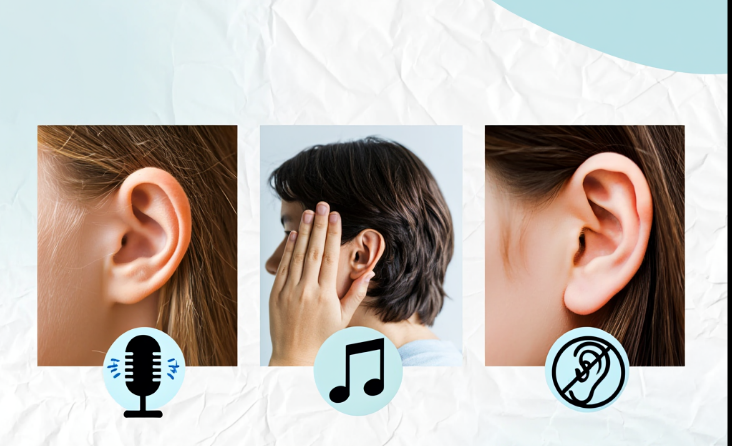
Fascinating Capabilities of the Human Ear
The human ear is a powerhouse of biology. It doesn’t just hear—it picks up subtle details, protects itself, and even helps you navigate the world. The hearing system and balance mechanisms work together seamlessly. Let’s explore some of the ear’s coolest tricks.
Sound Localization
Ever wonder how you know where a sound is coming from? The ear anatomy is built for it. Your brain compares the timing and volume of sounds reaching each ear. If a bird chirps to your left, the left ear hears it slightly sooner and louder. This helps you pinpoint the source. The pinna’s unique shape also tweaks sound waves, giving your brain extra clues. It’s like a built-in GPS for noise.
Frequency Range
The human ear can detect sounds from 20 Hz to 20,000 Hz. That’s everything from a low rumble to a high-pitched squeak. The cochlea’s hair cells are tuned to different frequencies, like keys on a piano. As you age, you might lose some high-frequency hearing, but the system is still impressive. It lets you enjoy music, catch whispers, and notice danger—like a car horn.
Self-Protection Mechanisms
Your ears have tricks to stay safe. The middle ear’s muscles can tighten to dampen loud sounds, protecting the inner ear. Earwax traps dirt and bugs, keeping the canal clean. The Eustachian tube balances pressure, preventing eardrum damage. These features show how the ear anatomy evolved to handle a noisy, messy world while keeping the hearing system intact.
The human ear is a marvel of nature. Its three parts—outer ear, middle ear, and inner ear—work like a well-oiled machine. The outer ear catches sound, the middle ear amplifies it, and the inner ear translates it for your brain. The eardrum kicks things off, while the vestibular system keeps you balanced. Together, they create a hearing system that’s both precise and versatile. From pinpointing a sound’s source to detecting a huge range of frequencies, your ears do it all. Next time you hear a song or catch your balance, give a nod to the incredible ear anatomy making it happen.
